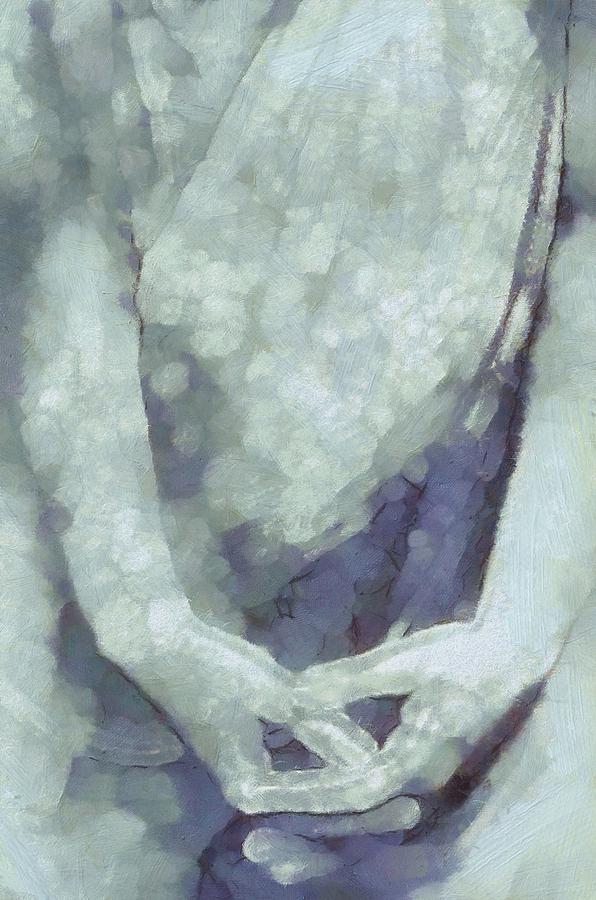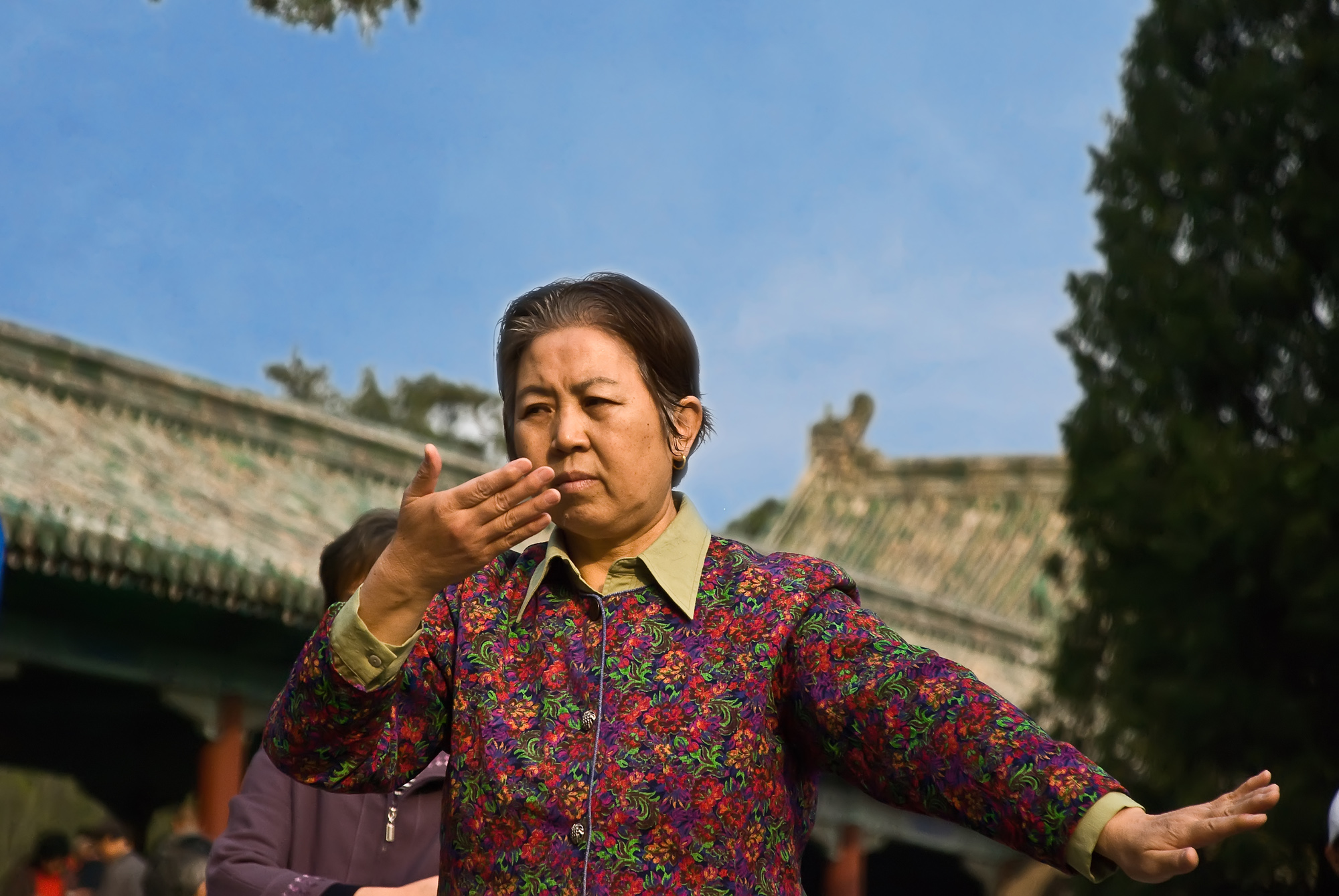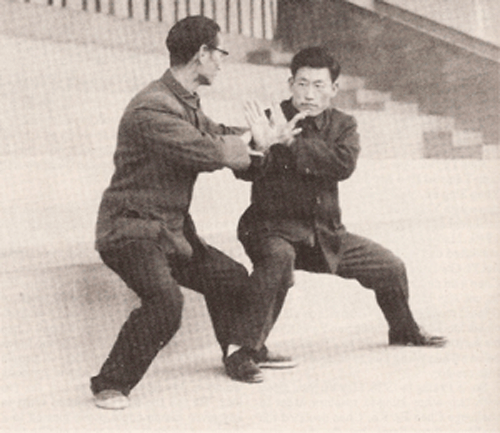 |
| (image credit) |
How do you seek stillness, and what do you need to meditate on?
 |
| (image credit) |
 |
| (image credit) |
 |
| (image credit) |
 |
| (image credit) |
Activities like T'ai Chi and Yoga offer an incredible opportunity for promoting optimal health. These exercises train a high degree of internal awareness and powerfully stimulate the relaxation response. This combination of awareness, relaxation and exercise has tremendous benefits for reducing stress, enhancing the immune system and generating physical and emotional health.By Fitness Matters-Life Matters.
 |
| (image credit) |
We are told to be in a state of "Sung" which has been mistranslated as to "relax". So the early instructors did the whole form with even paced movements, slow and calm for the whole form. This is not yin and yang! Sung actually means something like "moving without the conscious knowledge of movement". It does not mean to completely relax, as we would fall on the ground if we were to do that. However, within this state of sung, there must also be yin and yang balance without losing the "sung". So built into the "Old Yang Style of Yang Lu-ch'uan" we have movements that balance each other out by having both yin and yang movements. We will be moving along calmly, slowly and in as a relaxed state as possible, then will come an energy release point in the form where we perform a movement or set of moves that are totally explosive. Not tense, but explosive still retaining that sung ideal. Then we will be back instantly into the calm and the flowing movements, just like the great river or nature in general.By Erle Montaigue, in The Nature of T'ai Chi Ch'uan.
 |
| (image credit) |
'Sung' is often translated as 'relax', however as Louis Swaim observes etymologically the term 'Sung' is based on a character for 'long hair that hangs down' - that is, hair that is loosened and expanded, not 'drawn up'. This 'loose' and 'expanded' feeling is what is meant by relaxed in the context of T'ai Chi Ch'uan.By Bath T'ai Chi Ch'uan.
In Understanding Qigong DVD 3, renowned Qigong (chi kung) expert and author Dr. Yang, Jwing-Ming teaches the theory and practice of embryonic breathing. Also known as 'back to childhood breathing', this qigong meditation technique is the foundation of internal cultivation and advanced practice. Embryonic breathing develops excellent wellbeing and increases your sensitivity and awareness.
This multi-language program builds on the fundamental theory taught in DVDs 1 & 2. Dr. Yang's systematic approach to teaching offers deep insight into the ancient art of Qigong with modern scientific data to support his theory from both an Eastern and Western perspective.
Drawing on his 35 years of training in Qigong and his Western scientific background as a Physics professor and Ph.D in Mechanical Engineering, Dr. Yang presents a clear and fascinating explanation of his Qigong theory in a home seminar you won't want to miss. This program is a must for Qigong practitioners, acupuncturists, meditators, and anyone interested in understanding exactly of how and why Qigong works.
- Learn to conserve and store your Qi to abundant levels.
- Develop excellent health and vitality and enjoy deep relaxation.
- Establish the root of spiritual enlightenment.
The Chinese practice of Qigong, which is the study of Qi (energy) in the human body, has been developed through the observation of natural human behavior. For centuries, Qigong practitioners have advanced and documented their practice, and have passed down comprehensive instructions. This theory deserves careful study and deep understanding to be assimilated into your own Qigong practice, in order to make it more efficient and effective.
In Understanding Qigong DVD 2, renowned Qigong (chi kung) expert and author Dr. Yang, Jwing-Ming delves deeper into his Qigong theory. This multi-language DVD contains two more video courses in which Dr. Yang explains keypoints for correct and efficient Qigong practice, and details the methods of Qigong breathing. Dr. Yang's systematic approach to teaching offers deep insight into the ancient art of Qigong with modern scientific data to support his theory from both an Eastern and Western perspective.
Drawing on his 35 years of training in Qigong and his Western scientific background as a Physics professor and Ph.D in Mechanical Engineering, Dr. Yang presents a clear and fascinating explanation of his Qigong theory in a home seminar you won't want to miss. This program is a must for Qigong practitioners, acupuncturists, energy healers, and anyone interested in understanding exactly of how and why Qigong works.
- Learn keypoints, such as the 'Five Regulatings'.
- Explore the relationship between the thymus gland and the emotions.
- Understand the healing sounds of 'Hen' and 'Ha', and learn how they relate to Qigong and Taijiquan.
- Learn the basic Chinese concept of treating common ailments, specifically the breathing techniques for lung cancer and asthma.
Drawing on his 40 years of training in Qigong and his Western scientific background in Physics and Mechanical Engineering, Dr. Yang presents a clear and fascinating explanation of his Qigong theory, and offers a simple Qigong exercise for students to begin experiencing their Qi. This program is a must for Qigong practitioners, acupuncturists, energy healers, and anyone interested in understanding exactly of how and why Qigong works.
If you've never attended a Qigong theory seminar with Dr. Yang, here's a home version you won't want to miss! This is DVD one of a six-DVD series.
The Chinese word Qigong (pronounced "chee • gong") means 'energy work'. Qigong is the ancient art of using the mind to naturally develop the body's Qi (energy) for improved health and longevity. Some Qigong is practiced sitting or standing still, while other Qigong can be a kind of moving meditation.Chi (or qi) is not just a spiritual phenomenon in T'ai Chi, but it is also a physical experience. It is something you can generate, and feel, as can others you practice with. I am glad to hear, then, that Dr. Yang draws on his scientific and engineering background to help us better understand chi.
As millions of people worldwide are turning to Chinese medicine and healing practices such as Qigong and Tai Chi, it is important to understand what Qigong is and how it works. In these two video courses, renowned Qigong expert and author Dr. Yang, Jwing-Ming explains the concepts of Qigong and the human energetic circulatory system. Dr. Yang's systematic approach to teaching offers deep insight into the subject of Qigong with modern scientific data to support his theory from both an Eastern and Western perspective.
 |
| (image credit) |